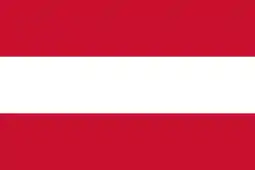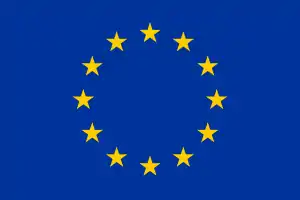List of diplomatic missions of Germany
This is a list of diplomatic missions of Germany. Historically, the German state of Prussia and several smaller German states had sent emissaries abroad prior to the establishment of the North German Confederation, the precursor to the modern Federal Republic of Germany.

In 1874, Germany had only four embassies (in London, Paris, Saint Petersburg, and Vienna), but this was complemented by non-ambassadorial representation in the form of 14 ministerial posts (in Athens, Bern, Brussels, The Hague, Constantinople, Copenhagen, Lisbon, Madrid, Rome, Stockholm, Peking, Rio de Janeiro, Washington, D.C., and to the Holy See), seven consulates-general with diplomatic status (in Alexandria, Belgrade, Bucharest, London, New York, Budapest, and Warsaw), and 37 consulates and vice-consulates headed by consular officers. By 1914, five additional embassies were established in Constantinople, Madrid, Rome, Washington, D.C., and Tokyo. The Foreign Office progressively reformed itself at this time to serve Germany's rising commercial and colonial interests abroad, as well as to reflect the professionalization of diplomacy generally.
Politics of the Third Reich affected the Foreign Office. In 1935 the Reich Citizenship Act led to the forced retirement of over 120 tenured civil servants. Positions and structures were created to imbed NSDAP representatives, and the SS began to be posted abroad as "police attachés". Under Joachim von Ribbentrop the Reich Foreign Ministry grew from 2,665 officers in 1938 to a peak of 6,458 in 1943, despite missions abroad closing as a consequence of the Second World War.
Germany's post-war diplomatic network started as early as 1949 with a mission in Paris to the newly formed Organisation for Economic Co-operation and Development. The following year consulates-general were (re)opened in London, New York City, Paris, Istanbul, Amsterdam, Brussels, Rome, and Athens (until 1951 these were not embassies, as by virtue of the Occupation Statute the three allied powers had competence of foreign affairs; these consulates were intended to just manage commercial and consular affairs). West Germany's Federal Foreign Office grew, and by the time of Germany's reunification in 1990, there were 214 diplomatic missions abroad. Following German reunification, the Federal Republic inherited several diplomatic representations of the Ministry for Foreign Affairs of former East Germany.[1]
The West German embassy in Stockholm was occupied by the Red Army Faction in 1975. In 1989 its embassies in Budapest and Prague sheltered fleeing East Germans while waiting for permission to travel onwards to West Germany; permission was subsequently given by the Czechoslovakian and Hungarian governments, accelerating the collapse of socialist hegemony in Eastern Europe.
Today Germany manages 227 diplomatic missions abroad (listed below). Of these, 153 are embassies, 54 general consulates, 7 professional consulates and 12 multilateral missions making it one of the world's largest diplomatic networks.[2] In addition, there are 337 honorary consuls, which are not included in this list. Furthermore, the German state maintains a liaison office in Taipei.
Africa
 Algeria
Algeria
- Algiers (Embassy)
 Angola
Angola
- Luanda (Embassy)
 Benin
Benin
- Cotonou (Embassy)
 Botswana
Botswana
- Gaborone (Embassy)
 Burkina Faso
Burkina Faso
- Ouagadougou (Embassy)
 Burundi
Burundi
- Bujumbura (Embassy)
 Cameroon
Cameroon
- Yaoundé (Embassy)
 Chad
Chad
- N'Djamena (Embassy)
 Democratic Republic of the Congo
Democratic Republic of the Congo
- Kinshasa (Embassy)
 Republic of the Congo
Republic of the Congo
- Brazzaville (Embassy)
 Djibouti
Djibouti
- Djibouti City (Embassy)
 Egypt
Egypt
- Cairo (Embassy)
 Equatorial Guinea
Equatorial Guinea
- Malabo (Embassy)
 Eritrea
Eritrea
- Asmara (Embassy)
 Ethiopia
Ethiopia
- Addis Ababa (Embassy)
 Gabon
Gabon
- Libreville (Embassy)
 Gambia
Gambia
 Ghana
Ghana
- Accra (Embassy)
 Guinea
Guinea
- Conakry (Embassy)
 Guinea-Bissau
Guinea-Bissau
 Ivory Coast
Ivory Coast
- Abidjan (Embassy)
 Kenya
Kenya
- Nairobi (Embassy)
 Liberia
Liberia
- Monrovia (Embassy)
 Libya
Libya
- Tripoli (Embassy)
 Madagascar
Madagascar
- Antananarivo (Embassy)
 Malawi
Malawi
- Lilongwe (Embassy)
 Mali
Mali
- Bamako (Embassy)
 Mauritania
Mauritania
- Nouakchott (Embassy)
 Morocco
Morocco
- Rabat (Embassy)
 Mozambique
Mozambique
- Maputo (Embassy)
 Namibia
Namibia
- Windhoek (Embassy)
 Niger
Niger
- Niamey (Embassy)
 Nigeria
Nigeria
 Rwanda
Rwanda
- Kigali (Embassy)
 Senegal
Senegal
- Dakar (Embassy)
 Sierra Leone
Sierra Leone
- Freetown (Embassy)
 South Africa
South Africa
 South Sudan
South Sudan
- Juba (Embassy)
 Sudan
Sudan
- Khartoum (Embassy)
 Tanzania
Tanzania
- Dar es Salaam (Embassy)
- Dodoma (Embassy liaison office)
 Togo
Togo
- Lomé (Embassy)
 Tunisia
Tunisia
- Tunis (Embassy)
 Uganda
Uganda
- Kampala (Embassy)
 Zambia
Zambia
- Lusaka (Embassy)
 Zimbabwe
Zimbabwe
- Harare (Embassy)
.jpg.webp) German Embassy in Dar es Salaam
German Embassy in Dar es Salaam.jpg.webp) German Embassy in Maputo
German Embassy in Maputo German Embassy in Monrovia
German Embassy in Monrovia
Americas
 Argentina
Argentina
- Buenos Aires (Embassy)
.svg.png.webp) Bolivia
Bolivia
- La Paz (Embassy)
 Brazil
Brazil
- Brasília (Embassy)
- Porto Alegre (Consulate-General)
- Recife (Consulate-General)
- Rio de Janeiro (Consulate-General)
- São Paulo (Consulate-General)
.svg.png.webp) Canada
Canada
 Chile
Chile
- Santiago (Embassy)
 Colombia
Colombia
- Bogotá (Embassy)
 Costa Rica
Costa Rica
- San José (Embassy)
 Cuba
Cuba
- Havana (Embassy)
 Dominican Republic
Dominican Republic
- Santo Domingo (Embassy)
 Ecuador
Ecuador
- Quito (Embassy)
 El Salvador
El Salvador
- San Salvador (Embassy)
 Guatemala
Guatemala
- Guatemala City (Embassy)
 Haiti
Haiti
- Port-au-Prince (Embassy)
 Honduras
Honduras
- Tegucigalpa (Embassy)
 Jamaica
Jamaica
- Kingston (Embassy)
 Mexico
Mexico
- Mexico City (Embassy)
 Nicaragua
Nicaragua
- Managua (Embassy)
 Panama
Panama
- Panama City (Embassy)
 Paraguay
Paraguay
- Asunción (Embassy)
 Peru
Peru
- Lima (Embassy)
 Trinidad and Tobago
Trinidad and Tobago
- Port of Spain (Embassy)
 United States
United States
- Washington, D.C. (Embassy)
- Atlanta (Consulate-General)
- Boston (Consulate-General)
- Chicago (Consulate-General)
- Houston (Consulate-General)
- Los Angeles (Consulate-General)
- Miami (Consulate-General)
- New York City (Consulate-General)
- San Francisco (Consulate-General)
 Uruguay
Uruguay
- Montevideo (Embassy)
 Venezuela
Venezuela
- Caracas (Embassy)
 German Embassy in Mexico City
German Embassy in Mexico City German Embassy in Montevideo
German Embassy in Montevideo
 German Embassy in Port of Spain
German Embassy in Port of Spain
 German Consulate-General and Permanent Mission to the United Nations in New York City
German Consulate-General and Permanent Mission to the United Nations in New York City German Consulate-General in San Francisco
German Consulate-General in San Francisco
Asia
 Armenia
Armenia
- Yerevan (Embassy)
 Azerbaijan
Azerbaijan
- Baku (Embassy)
 Bahrain
Bahrain
- Manama (Embassy)
 Bangladesh
Bangladesh
- Dhaka (Embassy)
 Brunei
Brunei
- Bandar Seri Begawan (Embassy)
 Cambodia
Cambodia
- Phnom Penh (Embassy)
 China
China
 Georgia
Georgia
- Tbilisi (Embassy)
 India
India
 Indonesia
Indonesia
- Jakarta (Embassy)
 Iran
Iran
- Tehran (Embassy)
 Iraq
Iraq
 Israel
Israel
 Japan
Japan
- Tokyo (Embassy)
- Osaka (Consulate-General)
 Jordan
Jordan
- Amman (Embassy)
 Kazakhstan
Kazakhstan
- Nur-Sultan (Embassy)
- Almaty (Consulate-General)
 Kuwait
Kuwait
- Kuwait City (Embassy)
 Kyrgyzstan
Kyrgyzstan
- Bishkek (Embassy)
 Laos
Laos
- Vientiane (Embassy)
 Lebanon
Lebanon
- Beirut (Embassy)
 Malaysia
Malaysia
- Kuala Lumpur (Embassy)
 Mongolia
Mongolia
- Ulan Bator (Embassy)
 Myanmar
Myanmar
- Yangon (Embassy)
 Nepal
Nepal
- Kathmandu (Embassy)
 North Korea
North Korea
- Pyongyang (Embassy)
 Oman
Oman
- Muscat (Embassy)
 Pakistan
Pakistan
 Palestine
Palestine
- Ramallah (Representative Office)
 Philippines
Philippines
- Manila (Embassy)
 Qatar
Qatar
- Doha (Embassy)
 Saudi Arabia
Saudi Arabia
 Singapore
Singapore
- Singapore (Embassy)
 South Korea
South Korea
- Seoul (Embassy)
 Sri Lanka
Sri Lanka
- Colombo (Embassy)
 Taiwan
Taiwan
 Tajikistan
Tajikistan
- Dushanbe (Embassy)
 Thailand
Thailand
- Bangkok (Embassy)
 Turkey
Turkey
 Turkmenistan
Turkmenistan
- Ashgabat (Embassy)
 United Arab Emirates
United Arab Emirates
 Uzbekistan
Uzbekistan
- Tashkent (Embassy)
 Vietnam
Vietnam
- Hanoi (Embassy)
- Ho Chi Minh City (Consulate-General)
 German Embassy in Ankara
German Embassy in Ankara German Consulate-General in Istanbul
German Consulate-General in Istanbul German Embassy in Baghdad
German Embassy in Baghdad German Embassy in Dhaka
German Embassy in Dhaka German Embassy in Hanoi
German Embassy in Hanoi German Embassy in Muscat
German Embassy in Muscat German Embassy in Pyongyang
German Embassy in Pyongyang German Consulate-General in Shanghai
German Consulate-General in Shanghai German Embassy in Tokyo
German Embassy in Tokyo German Embassy in Vientiane
German Embassy in Vientiane German Embassy in Yerevan
German Embassy in Yerevan
Europe
 Albania
Albania
- Tirana (Embassy)
 Austria
Austria
- Vienna (Embassy)
 Belarus
Belarus
- Minsk (Embassy)
.svg.png.webp) Belgium
Belgium
- Brussels (Embassy)
 Bosnia and Herzegovina
Bosnia and Herzegovina
- Sarajevo (Embassy)
 Bulgaria
Bulgaria
- Sofia (Embassy)
 Croatia
Croatia
- Zagreb (Embassy)
 Cyprus
Cyprus
- Nicosia (Embassy)
 Czechia
Czechia
- Prague (Embassy)
 Denmark
Denmark
- Copenhagen (Embassy)
 Estonia
Estonia
- Tallinn (Embassy)
 Finland
Finland
- Helsinki (Embassy)
 France
France
 Greece
Greece
- Athens (Embassy)
- Thessaloniki (Consulate-General)
 Holy See
Holy See
 Hungary
Hungary
 Iceland
Iceland
- Reykjavík (Embassy)
 Ireland
Ireland
- Dublin (Embassy)
 Italy
Italy
 Kosovo
Kosovo
- Pristina (Embassy)
 Latvia
Latvia
- Riga (Embassy)
 Lithuania
Lithuania
- Vilnius (Embassy)
 Luxembourg
Luxembourg
- Luxembourg (Embassy)
 Malta
Malta
- Valletta (Embassy)
 Moldova
Moldova
- Chişinău (Embassy)
 Montenegro
Montenegro
- Podgorica (Embassy)
 Netherlands
Netherlands
 North Cyprus[5]
North Cyprus[5]
- Lefkoşa (Embassy Office)
 North Macedonia
North Macedonia
- Skopje (Embassy)
 Norway
Norway
- Oslo (Embassy)
 Poland
Poland
 Portugal
Portugal
- Lisbon (Embassy)
 Romania
Romania
 Russia
Russia
- Moscow (Embassy)
- Kaliningrad (Consulate-General)
- Novosibirsk (Consulate-General)
- Saint Petersburg (Consulate-General)
- Yekaterinburg (Consulate-General)
 Serbia
Serbia
- Belgrade (Embassy)
 Slovakia
Slovakia
- Bratislava (Embassy)
 Slovenia
Slovenia
- Ljubljana (Embassy)
 Spain
Spain
- Madrid (Embassy)
- Barcelona (Consulate-General)
- Las Palmas (Consulate)
- Málaga (Consulate)
- Palma de Mallorca (Consulate)
 Sweden
Sweden
- Stockholm (Embassy)
 Switzerland
Switzerland
- Bern (Embassy)
 Ukraine
Ukraine
 United Kingdom
United Kingdom
 German Embassy in Bern
German Embassy in Bern German Embassy in Bratislava
German Embassy in Bratislava German Embassy in Budapest
German Embassy in Budapest German Embassy in Copenhagen
German Embassy in Copenhagen German Embassy in The Hague
German Embassy in The Hague German Embassy in Helsinki
German Embassy in Helsinki German Embassy in Kyiv
German Embassy in Kyiv German Embassy in Lisbon
German Embassy in Lisbon German Embassy in Ljubljana
German Embassy in Ljubljana
_01.jpg.webp) German Embassy in Madrid
German Embassy in Madrid_p3.jpg.webp) German Embassy in Minsk
German Embassy in Minsk
 German Consulate-General in Saint Petersburg
German Consulate-General in Saint Petersburg German Embassy in Sarajevo
German Embassy in Sarajevo German Embassy in Oslo
German Embassy in Oslo
 German Embassy in Reykjavík
German Embassy in Reykjavík German Embassy in Riga
German Embassy in Riga German Embassy in Rome
German Embassy in Rome German Embassy in Stockholm
German Embassy in Stockholm German Embassy in Tirana
German Embassy in Tirana German Embassy in Tallinn
German Embassy in Tallinn German Embassy in Vienna
German Embassy in Vienna.jpg.webp) German Embassy in Warsaw
German Embassy in Warsaw German Consulate-General in Wrocław
German Consulate-General in Wrocław
Multilateral organisations
- Brussels (Permanent Mission to the
 European Union and
European Union and  NATO)
NATO) - Geneva (Permanent Mission to the
 United Nations and other international organisations)
United Nations and other international organisations) - New York (Permanent Mission to the
 United Nations)
United Nations) - Paris (Permanent Mission to the Organisation for Economic Co-operation and Development and
 UNESCO)
UNESCO) - Strasbourg (Permanent Mission to the
 Council of Europe)
Council of Europe) - Vienna (Permanent Mission to the
 Organization for Security and Co-operation in Europe)
Organization for Security and Co-operation in Europe) - The Hague (Permanent Representation to the
 Organisation for the Prohibition of Chemical Weapons)
Organisation for the Prohibition of Chemical Weapons)
Countries without German diplomatic mission
Currently, there are no German diplomatic missions (but in some cases honorary consuls) in:
 Andorra (handled by German embassy in Madrid; Germany has a consulate-general in Barcelona which serves Andorra and an honorary consul in Andorra-la-Vella)
Andorra (handled by German embassy in Madrid; Germany has a consulate-general in Barcelona which serves Andorra and an honorary consul in Andorra-la-Vella) Antigua and Barbuda (handled by German embassy in Port of Spain)
Antigua and Barbuda (handled by German embassy in Port of Spain) Bahamas (handled by German embassy in Havana)
Bahamas (handled by German embassy in Havana) Barbados (handled by German embassy in Port of Spain)
Barbados (handled by German embassy in Port of Spain) Belize (handled by German embassy in Mexico City)
Belize (handled by German embassy in Mexico City) Bhutan (handled by German embassy in New Delhi)
Bhutan (handled by German embassy in New Delhi) Cape Verde (handled by German embassy in Dakar)
Cape Verde (handled by German embassy in Dakar) Central African Republic (handled by German embassy in Yaounde)
Central African Republic (handled by German embassy in Yaounde) Cook Islands (handled by German embassy in Wellington; Germany has a consulate in Avarua)
Cook Islands (handled by German embassy in Wellington; Germany has a consulate in Avarua) Comoros (handled by German embassy in Dar es Salaam)
Comoros (handled by German embassy in Dar es Salaam) Dominica (handled by German embassy in Port of Spain)
Dominica (handled by German embassy in Port of Spain) East Timor (handled by German embassy in Jakarta)
East Timor (handled by German embassy in Jakarta) Eswatini (handled by German embassy in Pretoria)
Eswatini (handled by German embassy in Pretoria) Fiji (handled by German embassy in Wellington; Germany has consulates in Suva and Nadi)
Fiji (handled by German embassy in Wellington; Germany has consulates in Suva and Nadi) Gambia (handled by German embassy in Dakar)
Gambia (handled by German embassy in Dakar) Grenada (handled by German embassy in Port of Spain)
Grenada (handled by German embassy in Port of Spain) Guinea-Bissau (handled by German embassy in Dakar)
Guinea-Bissau (handled by German embassy in Dakar) Guyana (handled by German embassy in Port of Spain; Germany has a consulate in Georgetown)
Guyana (handled by German embassy in Port of Spain; Germany has a consulate in Georgetown) Kiribati (handled by German embassy in Wellington)
Kiribati (handled by German embassy in Wellington) Lesotho (handled by German embassy in Pretoria)
Lesotho (handled by German embassy in Pretoria) Liechtenstein (handled by German embassy in Bern; Germany has a consulate in Balzers)
Liechtenstein (handled by German embassy in Bern; Germany has a consulate in Balzers) Maldives (handled by German embassy in Colombo; Germany has a consulate in Malé)
Maldives (handled by German embassy in Colombo; Germany has a consulate in Malé) Marshall Islands (handled by German embassy in Manila)
Marshall Islands (handled by German embassy in Manila) Federated States of Micronesia (handled by German embassy in Manila)
Federated States of Micronesia (handled by German embassy in Manila) Monaco (handled by German embassy in Paris; Germany has a consulate in Monte Carlo)
Monaco (handled by German embassy in Paris; Germany has a consulate in Monte Carlo) Nauru (handled by German embassy in Canberra)
Nauru (handled by German embassy in Canberra) Niue (handled by German embassy in Wellington)
Niue (handled by German embassy in Wellington) Palau (handled by German embassy in Manila; Germany has a consulate in Koror)
Palau (handled by German embassy in Manila; Germany has a consulate in Koror) Papua New Guinea (handled by German embassy in Canberra)
Papua New Guinea (handled by German embassy in Canberra) Solomon Islands (handled by German embassy in Canberra)
Solomon Islands (handled by German embassy in Canberra) Samoa (handled by German embassy in Wellington; Germany has a consulate in Apia)
Samoa (handled by German embassy in Wellington; Germany has a consulate in Apia) San Marino (handled by German embassy in Rome)
San Marino (handled by German embassy in Rome) São Tomé and Príncipe (handled by German embassy in Libreville; Germany has a consulate in Sao Tome)
São Tomé and Príncipe (handled by German embassy in Libreville; Germany has a consulate in Sao Tome) Seychelles (handled by German embassy in Nairobi; Germany has a consulate in Victoria)
Seychelles (handled by German embassy in Nairobi; Germany has a consulate in Victoria) Somalia (handled by German embassy in Nairobi)
Somalia (handled by German embassy in Nairobi) Saint Kitts and Nevis (handled by German embassy in Port of Spain)
Saint Kitts and Nevis (handled by German embassy in Port of Spain) Saint Lucia (handled by German embassy in Port of Spain)
Saint Lucia (handled by German embassy in Port of Spain) Saint Vincent and the Grenadines (handled by German embassy in Port of Spain)
Saint Vincent and the Grenadines (handled by German embassy in Port of Spain) Suriname (handled by German embassy in Port of Spain; Germany has a consulate in Paramaribo)
Suriname (handled by German embassy in Port of Spain; Germany has a consulate in Paramaribo) Tonga (handled by German embassy in Wellington; Germany has a consulate in Nuku'alofa)
Tonga (handled by German embassy in Wellington; Germany has a consulate in Nuku'alofa) Tuvalu (handled by German embassy in Wellington)
Tuvalu (handled by German embassy in Wellington) Vanuatu (handled by German embassy in Canberra)
Vanuatu (handled by German embassy in Canberra)
When in a non-EU country where there is no German embassy, German citizens as EU citizens have the right to get consular protection from the embassy of any other EU country present in that country.
Travel warnings and "Krisenvorsorgeliste"
Germany regularly publishes travel warnings on the website of the Auswärtiges Amt (Federal Foreign Office) to its citizens. The Office allows German citizens to register online in a special list, the Krisenvorsorgeliste ("Crisis-Prevention List") before they travel abroad (Elektronische Erfassung von Deutschen im Ausland [ELEFAND] Electronic Registration of Germans Being Abroad). With a password, the registered persons can change or update their data. The registration is voluntary and free of charge. It can be used for longer stays (longer than 3 months), but also for a vacation of only two weeks. The earliest date of registration is 10 days before the planned trip.
Worldwide travel warning in 2020 due to the coronavirus pandemic
On April 17, 2020, the German Auswärtiges Amt (Federal Foreign Office) published a worldwide travel warning on its website and advised German citizens not to take unnecessary trips abroad.
Meanwhile (July 2020), the warning has been revoked for other EU countries, the EFTA countries, and the microstates (Andorra, Monaco, San Marino, and Vatican City).
On its website, the Auswärtiges Amt will regularly update travel information.
See also
Notes
- The German Embassy to the Holy See is located outside Vatican territory in Rome.
References
- Biewer, Ludwig. "The History of the German Foreign Office" (PDF). auswaertiges-amt.de. Archived from the original (PDF) on 21 June 2006. Retrieved 29 January 2020.
- Amt, Auswärtiges. "The German Missions Abroad". German Federal Foreign Office. Retrieved 2021-01-04.
- "Liasion Office in Banjul and Bissau".
- "Liasion Office in Banjul and Bissau".
- Germany doesn't recognize Northern Cyprus, but has an embassy office in North Nicosia.
External links
| Wikimedia Commons has media related to Embassies of Germany. |
| Wikimedia Commons has media related to Consulates of Germany. |
- Foreign Office of the Federal Republic of Germany
- German Embassy in Canberra, Australia
- German Embassy in Buenos Aires, Argentina
- German Embassy in Ottawa, Canada
- German Embassy in Beijing, China
- German Embassy in Paris, France
- German Embassy in Madrid, Spain
- German Embassy in Bern, Switzerland
- German Embassy in Wellington, New Zealand
- German Embassy in Oslo, Norway
- German Embassy in London, United Kingdom
- German Embassy in Washington D.C., United States
- German Embassy in Abu Dhabi, United Arab Emirates
- German Consulate-General in Dubai, United Arab Emirates
- German Embassy in Caracas, Venezuela

